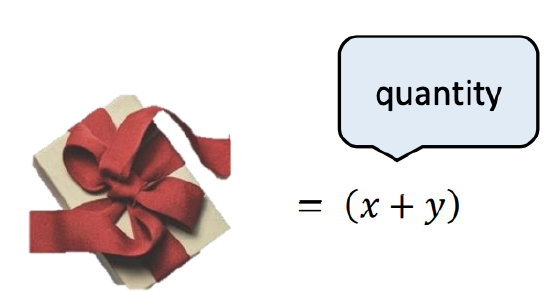5.1: Simplify Rational Expressions
- Page ID
- 83135
Rational numbers are sometimes informally called fractions. Numbers such as \(\dfrac{3}{4}\) and \(−\dfrac{1}{5}\) are rational numbers.
The set of rational numbers is the set of all numbers of the form \(\dfrac{p}{q}\) where both \(p\) and \(q\) are integers and \(q \neq 0\).
Numbers like \(\dfrac{\sqrt{3}}{2}\) and \(\dfrac{\pi}{4}\) are therefore not rational numbers! The numerators, in both cases, are not integers. Although \(\dfrac{\sqrt{3}}{2}\) and \(\dfrac{\pi}{4}\) are irrational numbers due to their irrational numerators, we commonly refer to them as fractions, even though that’s a bit of an allowance. But let’s agree \(\dfrac{\sqrt{3}}{2}\) and \(\dfrac{\pi}{4}\) are not rational numbers!
Whereas a rational number describes a type of number, a rational expression describes a type of algebraic expression.
Rational expressions are ratios of polynomials, \(p(x)\) and \(q(x)\):
\[\dfrac{p(x)}{q(x)}\]
where \(q(x)\) is not zero itself.
\(\textcolor{green}{\checkmark}\;\; \text{Examples of rational expressions: } \dfrac{2x+1}{3x+4}, −\dfrac{1}{x^2+1}, \dfrac{2−x^2}{5x}, \text{ or } \dfrac{5x^9−3x^4+x}{2x^2−7x}.\)
\(\textcolor{red}{\times}\;\; \text{Examples of expressions that are not rational expressions: } \dfrac{6x^2}{0}, \dfrac{x^{\pi}}{3x}, \dfrac{\sqrt{2x+9}}{5x}, \text{ or } \dfrac{x^2+2}{2^x} \)
How do these last \(4\) expressions fail to be rational expressions? You might have to revisit the definition of a polynomial from Chapter 2 to articulate why they are not rational expressions!
Canceling Quantities
Fractions denote division. \(\dfrac{5}{5} = 5 ÷ 5 = 1\). Algebraically, \(\dfrac{a}{a} = a ÷ a = 1\) for all \(a ≠ 0\). Canceling within fractions uses this property. Although the word “cancel” suggests the number or quantity “disappears,” it’s not a magic act! We should probably say “cancels to one” instead, so that we don’t lose sight of the mathematical sense.
Simplify \(\dfrac{3a^3b^2}{12a^2b^5}\)
Solution
When simplifying rational expressions, look for groups of variables or numbers that can be canceled to one. The numbers \(3\) and \(12\) have a common factor. The variable \(a\) is repetitively multiplied to create a power. The variable \(b\) is also repetitively multiplied to create a power. Cancel as many times as permits within a rational expression.
\(\begin{array} &&\dfrac{3}{12} \cdot \dfrac{a^3}{a^2} \cdot \dfrac{b^2}{b^5} &\text{Separating into groups sets up for cancelling.} \\ &=\dfrac{3}{3 \cdot 4} \cdot \dfrac{\cancel{a} \cdot \cancel{a} \cdot a}{\cancel{a} \cdot \cancel{a}} \cdot \dfrac{\cancel{b} \cdot \cancel{b}}{\cancel{b} \cdot \cancel{b} \cdot b \cdot b \cdot b} &\text{You could also use rules of exponents. See Chapter 1.} \\ &=\dfrac{1}{4} \cdot \dfrac{a}{1} \cdot \dfrac{1}{b \cdot b \cdot b} &\text{The cancelations are complete.} \\ &=\dfrac{a}{4b^3} &\text{Simplify powers.} \end{array}\)
The same property of division applies to quantities. Parentheses group algebraic expressions, bundling them together like a packaged box. The contents within the parentheses act as a single value, which is referred to as a quantity.

Simplify \(\dfrac{10(2y−1)^2(y+6)}{6(2y−1)(y+6)}\)
Solution
Since quantities behave like single values, the problem is logically equivalent to: \(\dfrac{10A^2B}{6AB}\). By refocusing the lens, this problem is very much like Example 5.1.1.
\(\begin{array} &&\dfrac{5 \cdot 2}{3 \cdot 2} \cdot \dfrac{\cancel{(2y−1)}(2y−1)}{\cancel{(2y−1)}} \cdot \dfrac{\cancel{y+6}}{\cancel{y+6}} &\text{Separating into groups sets up for cancelling.} \\ &=\dfrac{5}{3} \cdot \dfrac{2y-1}{1} \cdot 1 &\text{The cancelations are complete.} \\ &=\dfrac{5(2y-1)}{3} &\text{Write as a single fraction. This answer is okay!} \\ &=\dfrac{10y-5}{3} &\text{When multiplication is simple to do, it is often performed.} \end{array}\)
The final simplified answer can be multiplied out, or not! If it isn’t a quick multiplication, it’s often preferred that you leave the answer as powers or factored form.
Simplify \(\dfrac{x^2+2x-15}{x^2-5x+6}\)
Solution
Cancelations occur only over factored quantities. The given numerator and denominator are not in factored form. For factoring review, see chapter 2.
\(\begin{array} &\dfrac{x^2+2x-15}{x^2-5x+6}&= \dfrac{(x+5) \cancel{(x-3)}}{(x-2) \cancel{(x-3)}} &\text{Factor the numerator and the denominator.} \\ &=\dfrac{(x+5)}{(x-2)} \cdot 1 &\text{The quantities \((x − 3)\) cancel to one.} \\ &=\dfrac{x+5}{x-2} &\text{The rational expression is fully simplified.} \end{array}\)
The horizontal fraction bar groups the numerator and groups the denominator. The parentheses become redundant. Therefore, removing the parentheses is preferred.
Although \(\dfrac{ab}{cd} = \dfrac{a}{c} \cdot \dfrac{b}{d}\), addition and subtraction are more persnickety. You can make mistakes by incorrectly applying cancellation properties to addition or subtraction. As Example 5.1.3 demonstrates, cancellation can be applied after factoring.
Simplify \(\dfrac{2p+14}{p+7}\)
Solution
Both the numerator and the denominator are expressions involving addition. If the quantities are factorable, then we factor to compare quantities. Identical quantities can be cancelled after factoring.
\(\begin{array} &&\dfrac{2p+14}{p+7} = \dfrac{2(p+7)}{p+7} &\text{Factor the numerator using GCF \(= 2\).} \\ &= 2 \cdot \dfrac{p+7}{p+7} &\text{The quantities \((p + 7)\) cancel.} \\ &= 2 \cdot 1 &\text{The value after cancelling is \(1\).} \\ &= 2 \end{array}\)
Simplify \(\dfrac{12}{6t−4}\)
Solution
The denominator is a factorable expression. The numerator is a factorable number.
\(\begin{array} &&\dfrac{12}{6t−4} = \dfrac{\cancel{2} \cdot 2 \cdot 3}{\cancel{2}(3t−2)} &\text{Factor numerator and denominator. Cancel the common factor.} \\ &= \dfrac{6}{3t−2} &\text{Simplify.} \end{array}\)
It’s tempting to inspect the individual terms of the quantity \((3t − 2)\) for further cancellations, but because the terms are subtracted, not multiplied, canceling is not possible.
Try It! (Exercises)
For #1-6, use the definition of a rational number to determine if the number is rational or irrational.
- \(\dfrac{5}{9}\)
- \(1\)
- \(−4\)
- \(\dfrac{\sqrt{2}}{2}\)
- \(\pi\)
- \(\dfrac{3 \pi}{4}\)
For #7-12, use the definition of a rational expression to determine if the expression is a rational expression or something else.
- \(\dfrac{1}{x}\)
- \(\dfrac{5^x}{x}\)
- \(\dfrac{3x^5}{2x+1}\)
- \(\dfrac{1}{\sqrt{x}}\)
- \(\dfrac{4(2x−5)^2}{(x−7)(x+5)}\)
- \(7x^{−3}\)
For #13-34, simplify the rational expression.
- \(\dfrac{15a^4b^2}{6a^5b}\)
- \(\dfrac{7p^6q}{35p^7q^2}\)
- \(\dfrac{16x^4y^5z^2}{6x^3y^6z^2}\)
- \(−\dfrac{ 30u^7v^3w^9}{u^8v^8w^8}\)
- \(\dfrac{4(t−2)(3t+7)^3}{10(t−2)^2(3t+7)}\)
- \(\dfrac{40(6u+1)^2(4u−1)^5}{8(4u−1)^3(6u−1)}\)
- \(−\dfrac{ 2(8a−b)^3(2a+1)^2}{12(8a−b)^3(2a+1)^3}\)
- \(\dfrac{x^2+x−20}{x^2−5x+4}\)
- \(\dfrac{3q−6}{q^2−4}\)
- \(\dfrac{y^2−11y+30}{y^2−25}\)
- \(\dfrac{3c^2−14c−5}{3c^2+c}\)
- \(\dfrac{a^2+12a+36}{a^2+3a−18}\)
- \(\dfrac{5r^2−12r+4}{r^2−4r+4}\)
- \(\dfrac{w^2−81}{2w^2+18w}\)
- \(\dfrac{20y^2−5}{10y^2+35y−20}\)
- \(\dfrac{m^3−27}{2m^2−7m+3}\)
- \(\dfrac{10b^3+10}{10b^2−10}\)
- \(\dfrac{3p^4−48}{6p^2−24}\)
- \(\dfrac{2x^2+7x+6 }{4x^2+3x−6}\)
- \(\dfrac{5d(d+1)^3}{5d^3−5d}\)
- \(\dfrac{7v^3−28v}{7v(v−2)^3}\)
- \(\dfrac{3x^5−6x^4−105x^3}{6x^2+30x}\)
For #35-36, simplify the numerator and denominator, then simplify the rational expression.
- \(\dfrac{(3x+4)−(2x−4)}{(x+10)+(x+6)}\)
- \(\dfrac{(4x^2+5x+1)−(3x^2+3x+4)}{(2x^2+x+8)−(x^2−6x−4)}\)


